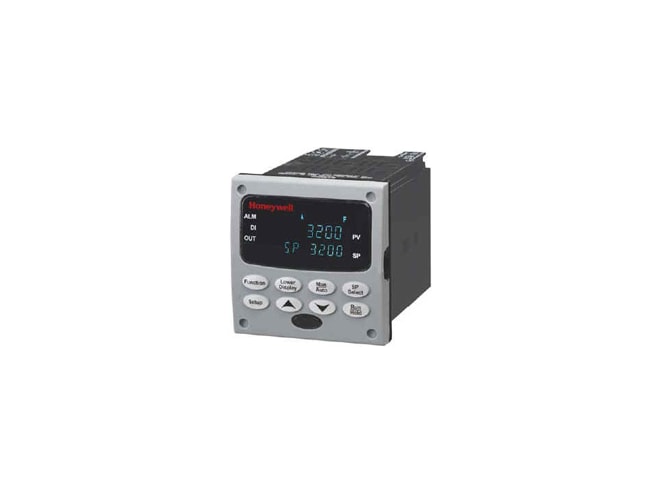
Honeywell UDC2500 Universal Digital Controller
1/4 DIN controller with waterproof faceplate for wash-down applications.

Overview
Features
- 1 Universal Input + 1 high level input
- 0.25% Accuracy
- Fast scanning rate (166ms)
- Up to 5 Analog or Digital Output Types
- 2 Digital Inputs (optional)
- Ethernet and Modbus communication (optional)
- Infrared PC & Pocket PC configuration (optional)
- NEMA4X and IP66 front face protection
- Multi-language prompts
- ¼ DIN Size
- Jumper free configuration
- Easily Field Upgradable
- Downward compatibility with existing UDC2300 applications
Description
The Honeywell UDC2500 universal digital controller delivers unmatched power, flexibility and performance in the popular ¼ DIN size. The waterproof NEMA 4X/IP66 faceplate allows the controller to be used in wash-down applications. Simple, intuitive software makes controller configuration a snap. The UDC2500 controller is easy to install, easy to configure, easy to operate and easy to own.
A wireless infrared communication port enables controller setup from a Pocket-PC or computer. Ethernet communication allows easy connection to plant networks. A high/low limit model that carries the FM logo is also available and the unit can be ordered with a single or dual display option.
Analog Inputs
The UDC2500 has two analog inputs with a typical accuracy of ±0.25% of full-scale input and a typical resolution of 16 bits. Both analog inputs are sampled six times per second (every 166 ms).
The first input is a low-level type which accepts thermocouple, RTD, ma, mV, and voltage types. The second input is a high level type and can be used as a remote setpoint, for data acquisition or as a parameter to be alarmed on. This input accepts ranges 0-5V, 1-5V, 0-2V, 0-20mA or 4-20mA.
Cold junction compensation is provided for thermocouple type inputs. Upscale or downscale sensor break protection is keyboard configurable. A configurable digital filter of 0 to 120 seconds provides input signal damping. All input types are configurable via the keyboard, there are no internal jumpers or switches. The two inputs are isolated from all other inputs and outputs, but not from each other.
Documents
Need Help? Call a Temperature engineer at 1-800-884-4967
We're open Mo-Th 8am to 5:30pm. Fr 8am to 5pm ET






